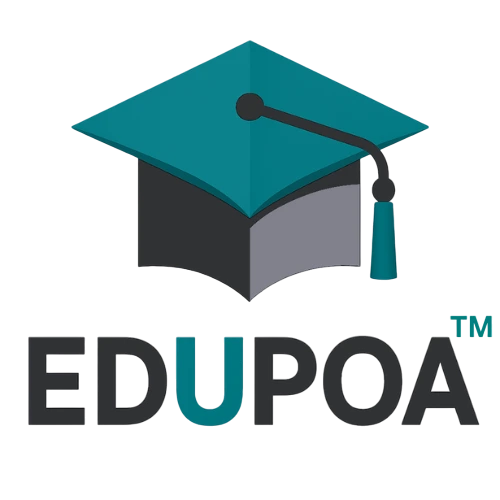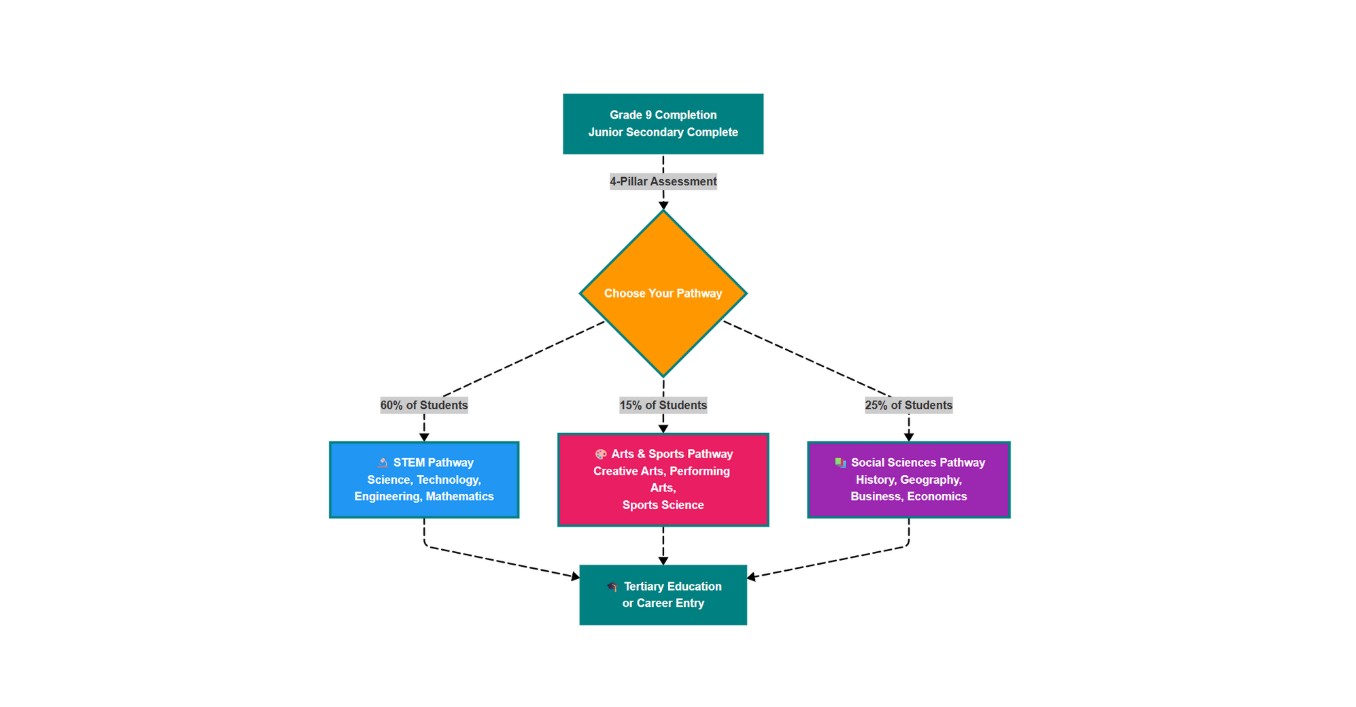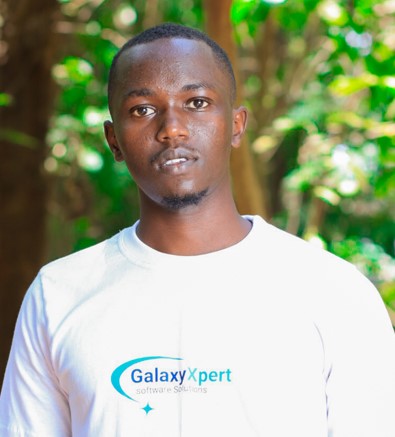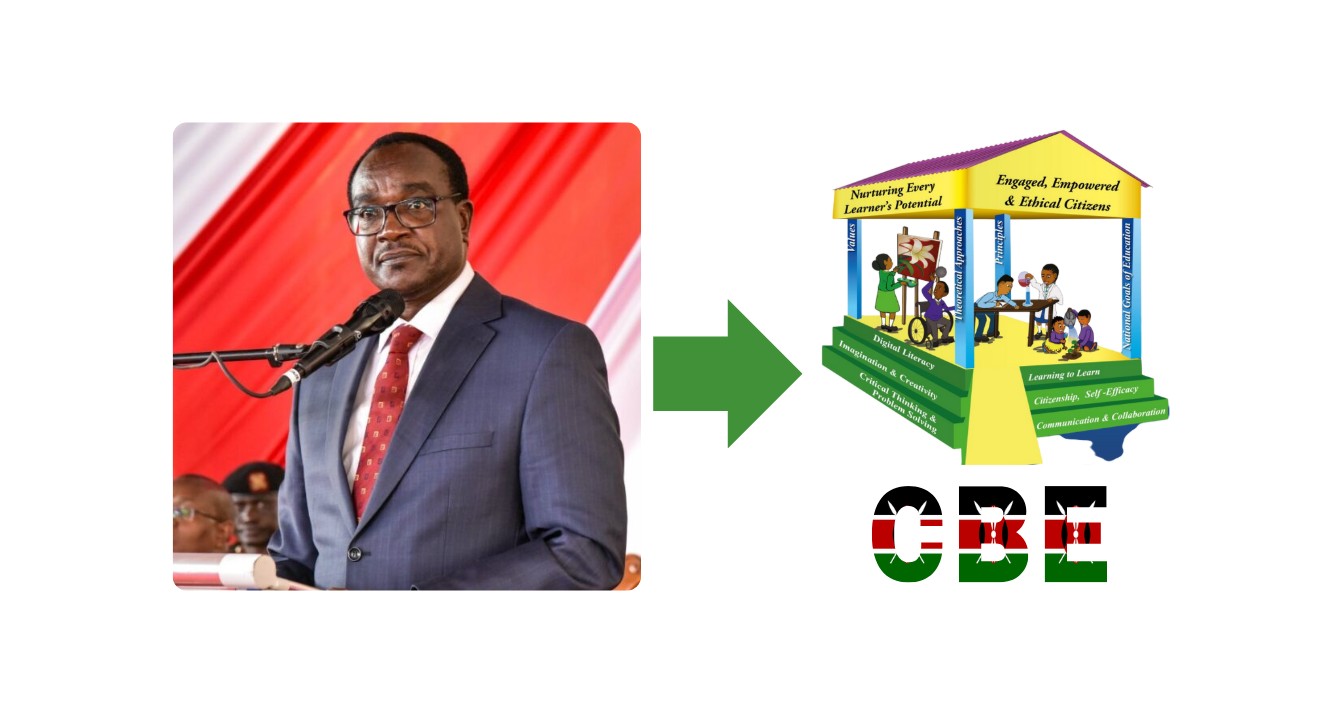One of the most significant moments in a Kenyan student's CBE journey comes at the end of Grade 9: choosing a senior school pathway. This decision shapes the next three years of education and influences future career opportunities.
If you're a parent or student navigating this critical transition, you're not alone. This comprehensive guide breaks down everything you need to know about CBE's three official pathways and how to make the right choice.
🎯 The Three Official CBE Pathways
Kenya's Competency-Based Education system offers three distinct pathways for senior school (Grades 10-12). Let's explore each one in detail:
🔬 1. STEM Pathway (Science, Technology, Engineering, Mathematics)
🎯 Ideal For: Students passionate about science, problem-solving, innovation, and technology
Core Focus Areas:
- Mathematics: Advanced algebra, calculus, geometry, and statistics
- Physics: Mechanics, electricity, magnetism, modern physics
- Chemistry: Organic, inorganic, physical chemistry, and lab work
- Biology: Genetics, ecology, human anatomy, microbiology
- Computer Science: Programming, data science, ICT applications
Specialized Tracks Within STEM:
- Pure Sciences: Biology, Chemistry, Physics, Advanced Mathematics
- Applied Sciences: Agriculture + Technical subjects + Sciences
- Technical Studies: Aviation, Building Construction, Electricity, Electronics, Woodwork
Career Pathways:
Medicine, Engineering, Computer Science, Architecture, Aviation, Pharmacy, Research Sciences, Data Analysis, Robotics, Environmental Science, Agricultural Technology
✅ Best Suited For: Students who excel in logical thinking, love experimentation, enjoy mathematics, and are curious about how things work.
🎨 3. Arts & Sports Science Pathway
🎯 Ideal For: Creative students with talents in arts, music, sports, or performance
Core Focus Areas:
- Visual Arts: Drawing, painting, sculpture, graphic design, photography
- Performing Arts: Theatre, drama, film production, stage performance
- Music: Vocal music, instrumental performance, music theory, production
- Sports Science: Sports physiology, coaching, fitness training, sports management
- Design & Fashion: Fashion design, interior design, product design
Specialized Tracks Within Arts & Sports:
- Creative Arts: Fine Arts, Music, Theatre & Film
- Sports Science: Sports Coaching, Fitness Training, Sports Management
- Design & Media: Graphic Design, Fashion, Media Production
Career Pathways:
Professional Artist, Musician, Actor, Film Director, Graphic Designer, Fashion Designer, Sports Coach, Athlete, Sports Management, Event Planning, Animation, Photography, Interior Design, Media Production
✅ Best Suited For: Students who are creative, expressive, talented in arts or sports, and want to pursue careers in creative industries or athletics.
🏛️ The 4-Pillar Assessment: How Students Choose Their Path
Before selecting a pathway, every Grade 9 student undergoes a comprehensive 4-Pillar Assessment that evaluates:
1. 🎯 Interests Assessment
Students rank their preferences across 12 CBE learning areas, identifying what subjects genuinely engage and excite them.
2. 💪 Skills Assessment
Evaluates 8 core skill areas to identify where students demonstrate natural strengths and competencies.
3. ❤️ Values Assessment
Identifies the student's core life values and what matters most to them personally and professionally.
4. 🚀 Aspirations Assessment
Explores future career goals, dreams, and aspirations to align education with long-term objectives.
🎯 Outcome: Based on these four pillars, students receive personalized recommendations on which pathway best aligns with their unique profile. This data-driven approach ensures students make informed decisions rather than random choices.
🔄 How CBE Pathways Differ from 8-4-4
❌ Common Misconceptions About CBE Pathways
Myth 1: "STEM is the only pathway to success"
✓ Reality: All three pathways offer excellent career opportunities. Kenya's economy needs lawyers, entrepreneurs, artists, and athletes just as much as engineers and doctors. Success depends on passion and skill, not pathway choice.
Myth 2: "Arts & Sports is for weak students"
✓ Reality: This pathway requires exceptional talent, creativity, and dedication. Many of Kenya's most successful professionals – musicians, designers, athletes, filmmakers – would have thrived in this pathway.
Myth 3: "You can't change pathways once chosen"
✓ Reality: While pathways provide structure, there's flexibility. Students can switch tracks within pathways or even transition between pathways if properly guided, though this should be done early in Grade 10.
Myth 4: "There are 4 pathways including Technical Education"
✓ Reality: There are only 3 official pathways. Technical Education is a track within the STEM pathway, not a separate pathway. This is an important distinction!
👨👩👧👦 Guidance for Parents: Helping Your Child Choose
✅ DO:
- Observe their natural interests: What does your child do in their free time? What excites them?
- Consider their strengths: Where do they naturally excel without excessive struggle?
- Trust the 4-Pillar Assessment: It's data-driven and designed to identify the best fit
- Research career options: Understand what each pathway can lead to
- Have open conversations: Listen to your child's dreams and aspirations
- Value all pathways equally: Success comes from passion, not just the pathway name
❌ DON'T:
- Force STEM because "it's better": A struggling STEM student will fare worse than an excellent Social Sciences student
- Dismiss Arts & Sports: Creative industries and sports are booming sectors with great opportunities
- Base decisions on peer pressure: "Everyone is doing STEM" is not a valid reason
- Ignore your child's input: They'll be studying these subjects for 3 years – their motivation matters
- Choose based on family tradition: Just because you were in sciences doesn't mean your child should be
🏫 After Choosing Your Pathway: School Selection
Once students select their pathway, they can choose up to 12 schools that offer their preferred track:
- 9 boarding schools (for students preferring boarding)
- 3 day schools (for students preferring to stay at home)
💡 Pro Tip:
Research schools' strengths in your chosen pathway. Some schools excel in STEM, others in arts, and some in sports. Choose schools aligned with your pathway for better resources and experienced teachers in your area.
📅 CBE Pathway Selection Timeline
School Selection Period
Students choose up to 12 schools (9 boarding, 3 day) offering their selected pathway.
KJSEA
Learners sit for the Kenya Junior Secondary Education Assessment (KJSEA), which forms 60% of their placement score.
Grade 10 Placement
Students are placed in schools based on choices, availability, and performance.
Grades 10-12: Pathway Specialization
Three years of focused study in chosen pathway, preparing for tertiary education or career entry.
📚 Additional Resources
🏛️ Official Resources
- Kenya Institute of Curriculum Development (KICD) - Official CBE guidelines
- Ministry of Education - Pathway selection resources
- KNEC - Assessment and examination information
👨👩👧 For Parents & Students
- Career guidance centers in Kenya
- School counselors and career advisors
- Online career assessment tools
- EduPOA CBE Pathfinder tool (if your school uses it)
👩🏫 For Educators
- Teacher training on career guidance
- Pathway counseling best practices
- Student assessment tools and rubrics
🎯 Final Thoughts: Making the Right Choice
Choosing a CBE pathway is not about selecting the "best" option – it's about selecting the right option for each individual student. The beauty of Kenya's Competency-Based Education system lies in recognizing that:
- Every student has unique strengths that deserve recognition
- Success takes many forms – doctor, designer, economist, athlete
- Passion fuels excellence more than pressure ever could
- Kenya needs diverse talents to achieve Vision 2030
Whether your child dreams of discovering scientific breakthroughs, shaping policy, or creating beautiful art – there's a pathway designed for them.
The question isn't "Which pathway is best?" The question is: "Which pathway is best for you?"
📢 Have Questions About CBE Pathways?
Drop your questions in the comments below! Whether you're a parent navigating pathway selection, a student curious about options, or an educator guiding learners – let's discuss.
Share this guide with other parents and students preparing for this important decision!






Leave a Comment